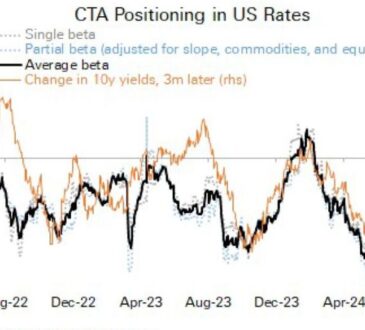
Many trading experts often claim that diversification is essential in most investing endeavors. And they are right. It reduces financial risk by spreading one’s net worth across various asset classes, minimizing an investor’s risk exposure, and increasing their potential risk-adjusted returns. That is so because adding one’s entire funds into a single class/security can be super hazardous if the bought asset fails to perform. Hence, diversification can put a portfolio into a position to withstand performance dips and stay the course working to hitting pre-set targets.
One way to attain high stability in an investment journey is to hold assets in multiple currencies (cross-border investing). That can get called super-diversification, trading on a global scale. Naturally, this, like everything else, has its pros and cons. But everyone can agree that it best gets done with the help of a multi-currency portfolio tracker, software that can convert assets in a portfolio into a base currency. And that aspect, with other vital ones of this practice, gets detailed below.
FAQ
What is a multi-currency portfolio?
To obtain sufficient diversification, many investors opt to put their money to work via global-oriented mutual funds traded on their market or by getting foreign shares traded there. The holdings in a portfolio can be in any currency, and one’s boasting assets in different ones are multi-currency portfolios.
What are the benefits of investing in a multi-currency portfolio?
In veteran traders’ eyes, it goes without saying that better opportunities lie when one looks globally than only locally. Again, this can lead to better diversification, access to credit in foreign countries, perks from exchange rates, and more.
What are the risks of investing in a multi-currency portfolio?
These usually involve exchange rate danger, local tax implementations, and political instability dramatically affecting held securities.
How can I minimize tax liabilities when investing in multi-currency portfolios?
Many of the same strategies to traditional investing apply to multi-currency portfolio trading that aims to lower tax liabilities. That means utilizing investment structures like ETFs and mutual funds, using tax harvesting, staying aware of currency exchange rates, and considering tax treaties.
What are the best practices for managing multi-currency portfolios effectively?
Develop a clear investment approach, keep accurate records, stay informed about market goings-on, diversify, rebalance regularly, and work with a trusted advisor or pay for quality tracking software.
Choosing the Right Multi-Currency Portfolio Tracker
As touched upon above, implementing tracking software in one’s trading can bring a world of advantages. Concerning multi-currency investing, these apps can convert any currency into a base one, listing this value alongside the native one of every holding. Plus, they have no restrictions on what securities someone can have in their portfolio. Options like the popular StockMarketEye can utilize the FX (foreign exchange) rate defined at the time of purchase when calculating TR, TR%, Gain, Gain%, and other column values. Any discrepancies connected to FX problems can get verified on the app’s Transaction Report page.
Aside from StockMarketEye, other viable high-end tracking choices are MorningStar, SigFig, Sharesight, and Kubera.
On top of offering digital instruments that help with foreign holdings (multi-currency support), these pieces of dedicated financial software also deliver premium performance evaluation that incorporates tried-and-tested metrics, real-time alerts, tax features, a user-friendly interface, integration with investment platforms and brokerages, and automatic data synchronization.
Managing Multi-Currency Portfolios Effectively
Without question, the principal difficulty with managing multi-currency portfolios comes from the complexities involved with continuously following and dealing with the specificities of regulations and tax laws in multiple countries. To overcome these hardships, investors often must seek advice from local experts which incurs additional costs in addition to their portfolios trading and transaction ones.
If one uses some of the tracking apps rattled off above, they do not have to worry about accurate data on currency exchange rates, tax reporting, and investment performance. That was something that was a major headache back in the day. So, technology has made that bit easier. Nevertheless, everyone must still know how to evaluate and handle market volatility in multiple regions that can get affected by a myriad of factors, some of which can be tremendously unpredictable if they wish to have any hopes of success.
Hence, it is vital to watch for modifications in central bank policies and monitor economic data/political events in invested territories. These can drive currency movements and asset classes significantly. Therefore, it is mandatory to employ established risk management strategies (like hedging), diversify trades, and be mindful of conversion expenses, as they can pile on if you are trading too often. To avoid the latter, checking low-cost online currency conversion services is advisable. These do exist, and they can significantly minimize costs.
Tax Implications of Multi-Currency Portfolios
The top ones are knowing the type of treatment foreign investments gets. In some places, investors must pay tax on interest earned or dividends. In others, this is not so. The same goes for capital gains taxes. But it is almost paramount to note that if someone offloads an investment denominated in a foreign currency, the gains attained as a product of currency fluctuation can get seen as capital ones and taxed at an exclusive rate. Moreover, if an investor, classified as a foreigner, has investments whose funds surpass a specific limit, they may get subjected to special reporting requirements. Failure to comply with these may result in fines.
The top practices to avoid these complications are hiring consultants who can navigate the region’s regulatory complexities, keep accurate records, use currency hedging, and stick to tax-efficient investment vehicles.
Impact of Currency Fluctuations on Multi-Currency Portfolios
Currency hedging entails utilizing forwards, futures contracts, and options to protect against currency risk. The goal here is to lock in a distinct exchange rate and protect from losses that stem from adverse currency movements. Though, hedging can also limit potential gains if the currency moves favorably. The pros of diversification have gotten touched upon several times above. Keep in mind that these two tools, hedging, and diversification, can assist with currency fluctuation, causing a change of value in investments through multiple methods outside the scope of this article.
To Wrap Up
To reap the maximum benefits of multi-currency portfolios, investors must fork over some cash for a decent tracking app, diversify, hedge, and follow through with proven risk management tactics. The practice is not without its cons, but it can supply better returns than investing in only local holdings.




